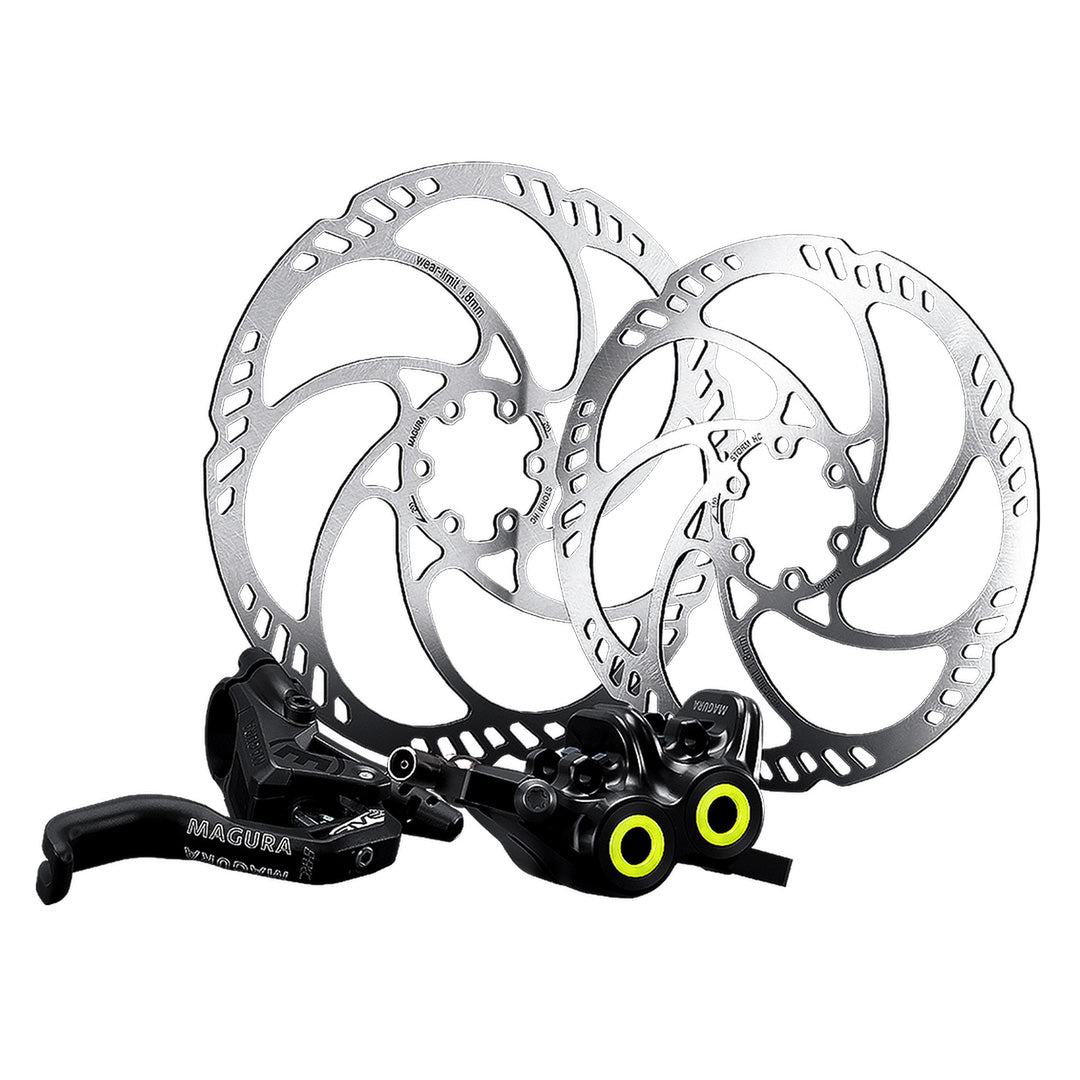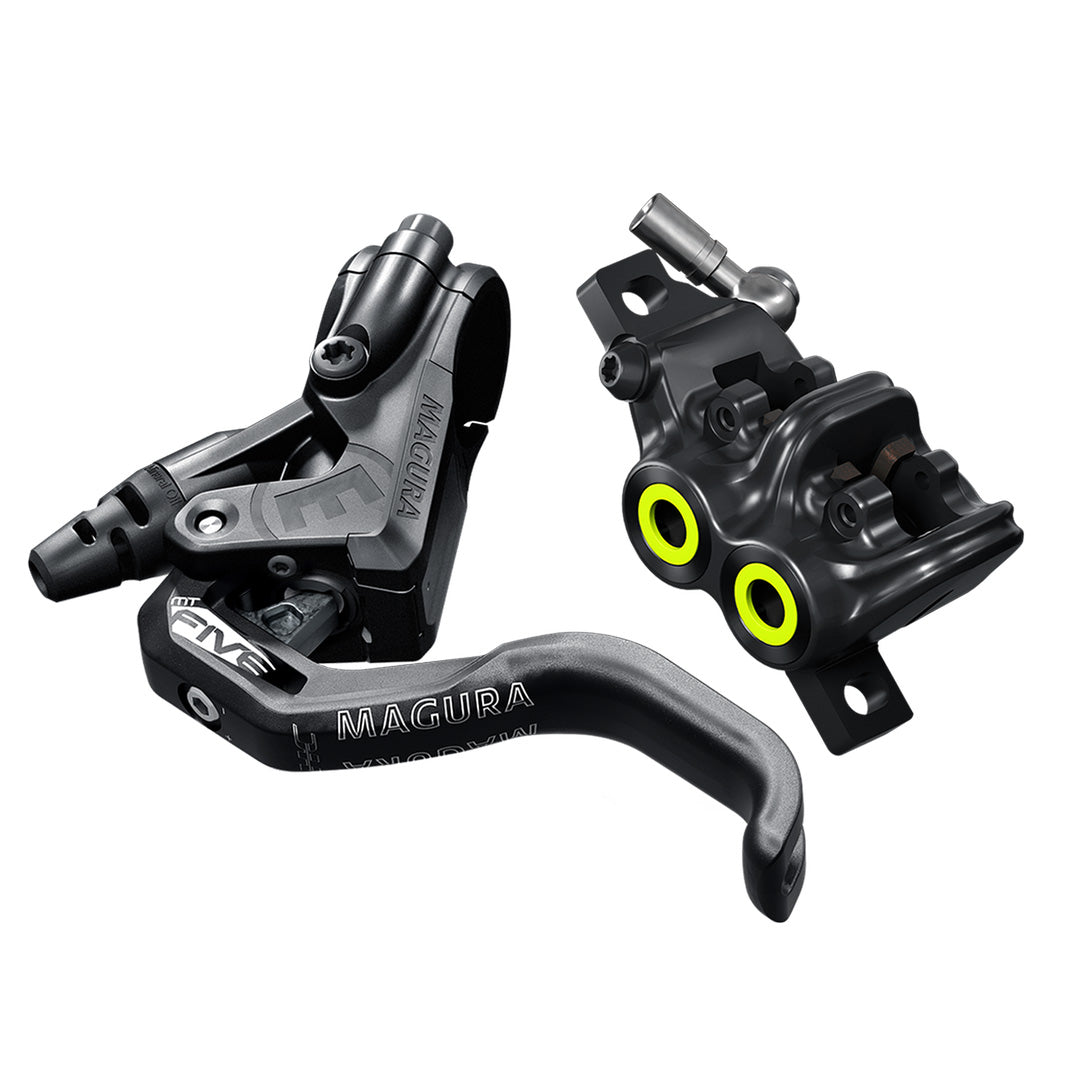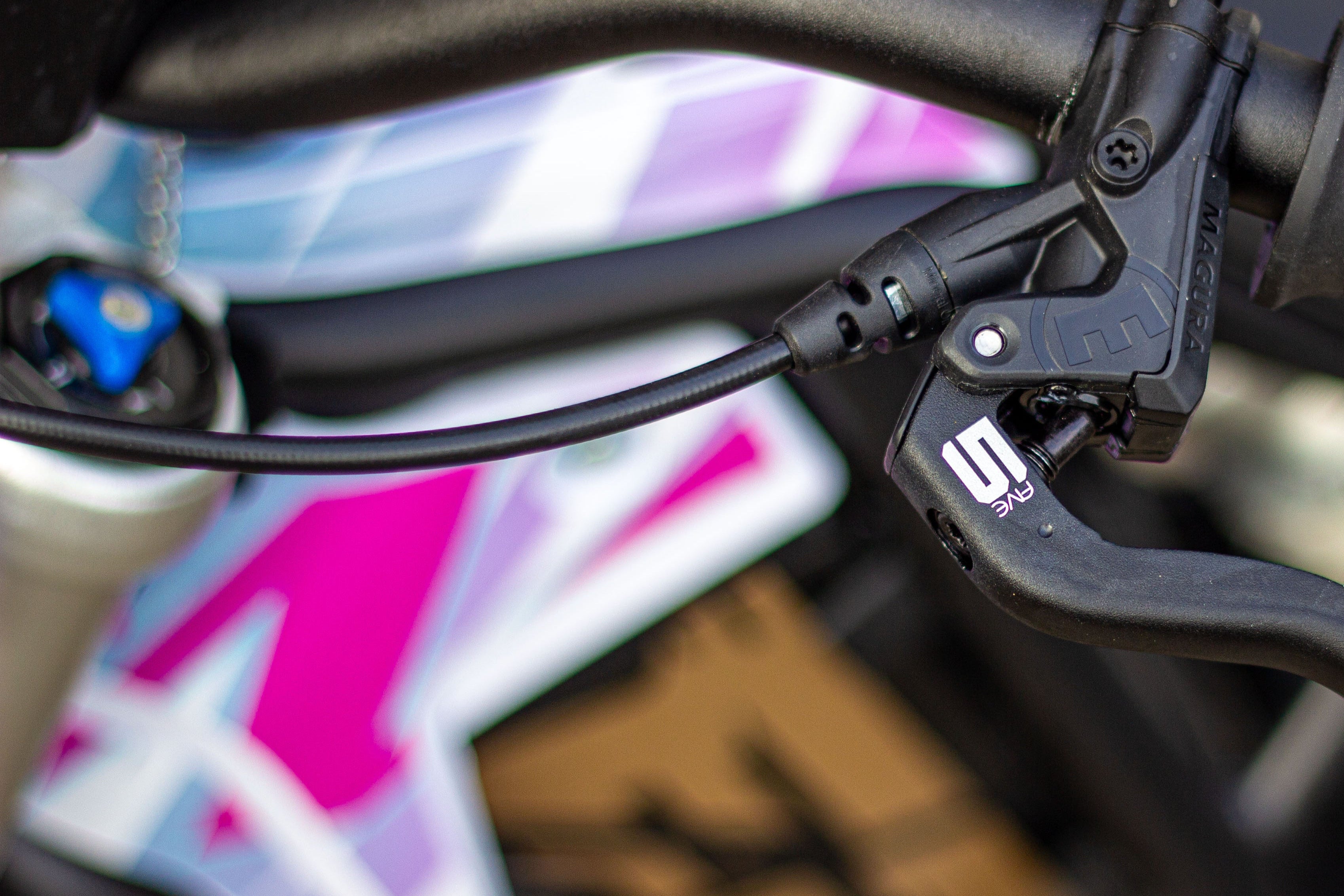Description
Description
Attractively priced MT5 PRO set with Storm HC rotors
Please not that the rear brake disc will not fit Sur Ron without modifications.
The entry into the world of the high-performance brake. In bike parks, on the trail or in day-to-day urban biking. The MT5 has been famed for providing excellent braking power at an unbeatable price for many years. It tames the strongest forces of nature. And even stars like Fabio Wibmer!
- The radial master design reduces friction and enables small/large transmission ratios. This reduces transmission losses and makes the brake more sensitive and easier to modulate
- The 4-piston brake calliper forged in one piece has exceptionally high rigidity
- The 1-finger HC lever blade offers comfortable ergonomics and a hard bite point for various hand sizes
- Compared to the MT7, the MT5’s increased piston retraction makes it extremely dependable in continuous use. Installation is also fast and the MT5 is friction-free
Shipping
Shipping
Delivery options available from 24 hours to 5 days.
Cut off for next day delivery is before 1pm.
Delivery days are Monday to Friday as standard. Some courier companies may deliver on Saturdays.
Please note that next day delivery to Scotland cannot be guaranteed with all courier companies.









